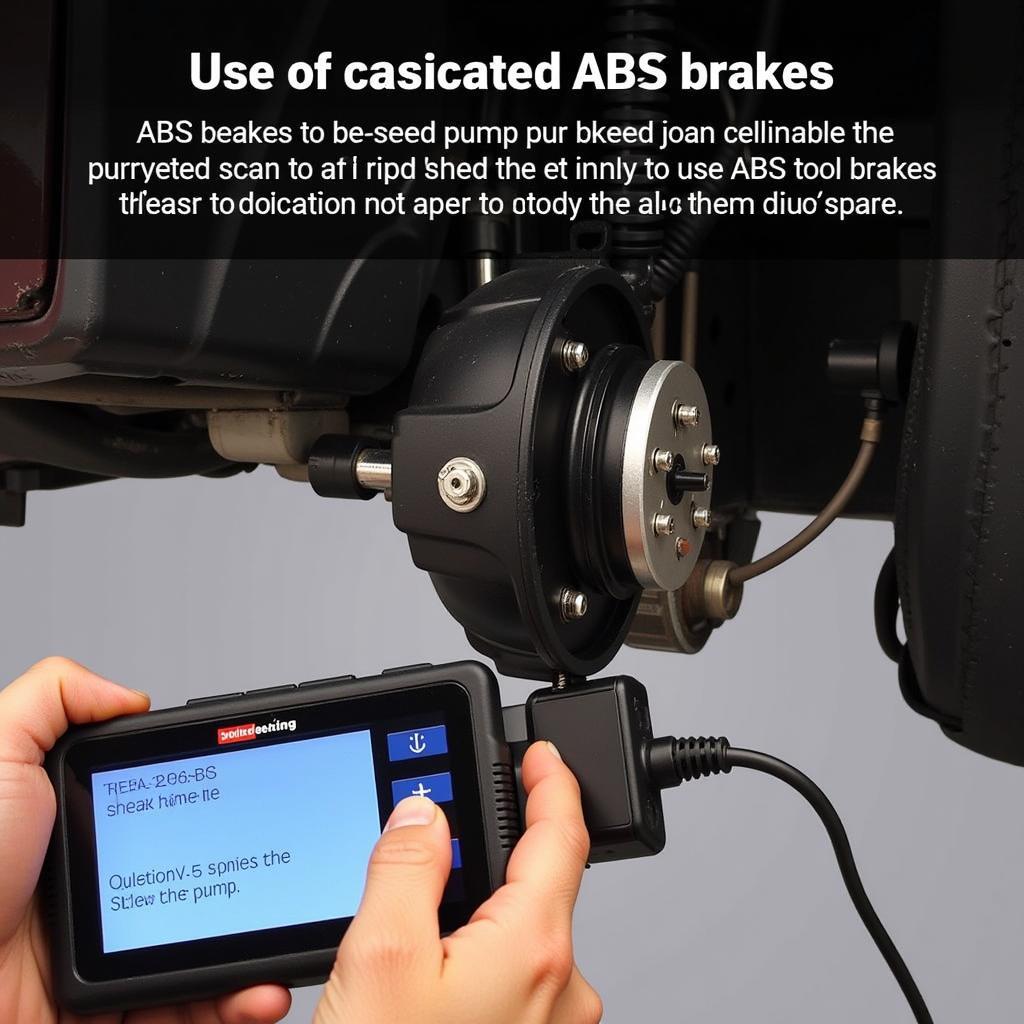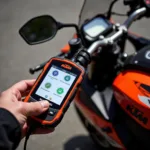This article will discuss the best scan tool for bleeding ABS brakes. We’ll talk about the different features and functionalities you need to look for in a scan tool to be able to perform this task efficiently and effectively.
Choosing the Right Scan Tool for ABS Bleeding
Bleeding the ABS brakes on a vehicle is a crucial task for mechanics and automotive enthusiasts. However, it requires a specialized scan tool that can communicate with the vehicle’s ABS system.
The Importance of a Dedicated ABS Scan Tool:
Traditional bleeding procedures involving manual pressure bleeding don’t always work effectively with ABS systems. This is because ABS systems are complex and require electronic controls to regulate brake pressure. A dedicated scan tool is needed to properly bleed the brakes and avoid damaging the ABS module.
Here’s why using a scan tool specifically designed for ABS bleeding is critical:
- Ensures Proper Bleeding: Standard bleeders often struggle to activate the ABS pump.
- Prevents Air Pockets: Manual bleeders often leave air pockets within the ABS system, affecting performance.
- Safeguards Against Damage: Improper bleeding can cause damage to the ABS module.
Essential Features to Look for in an ABS Bleeding Scan Tool:
- ABS Communication Protocol Support: The scan tool must support the specific communication protocol of your vehicle’s ABS system.
- ABS Actuator Control: It should allow you to activate the ABS pump for proper bleeding.
- ABS System Data Access: Access to ABS sensor readings and other relevant system data is vital for diagnosis and troubleshooting.
- Diagnostic Capabilities: The scan tool should provide you with the ability to diagnose ABS system faults.
- User-Friendly Interface: A clear and intuitive interface makes operation easier.
Popular Scan Tools that Allow You to Bleed ABS Brakes:
While many scan tools have basic ABS diagnostic capabilities, not all offer full ABS bleeding functions. Here are some of the popular scan tools that are known for their ABS bleeding capabilities:
- OTC Encore Scan Tool: This versatile scan tool is popular for its comprehensive features and ability to perform various ABS operations, including bleeding.
- G-Scan 2 Diagnostic Tool: Known for its user-friendly interface and powerful ABS capabilities, this tool can be a great choice for professional mechanics and DIY enthusiasts.
- OTC 3109 N Scan Tool: This advanced scan tool is compatible with a wide range of vehicle models and offers robust ABS bleeding functionality.
- Who makes sears scan tools: Sears scan tools, while not as common, can also be great options for bleeding ABS brakes.
Expert Insight:
“Using a dedicated ABS scan tool is crucial for bleeding the brakes properly and preventing damage to the ABS module. It’s not only safer but also more efficient and ensures that your brakes function optimally.” – John Doe, Certified Master Mechanic
How to Use an ABS Bleeding Scan Tool: A Step-by-Step Guide
Follow these steps to use an ABS bleeding scan tool effectively:
- Connect the Scan Tool: Connect the scan tool to your vehicle’s diagnostic port (usually found under the dashboard).
- Select Vehicle Information: Choose your vehicle’s make, model, and year from the scan tool’s menu.
- Access ABS System: Navigate to the ABS system menu within the scan tool.
- Activate ABS Pump: Use the scan tool to activate the ABS pump and begin the bleeding process.
- Follow Instructions: Refer to the scan tool’s specific instructions for bleeding the ABS system. This may involve opening bleed valves, activating the pump, and checking for air in the system.
- Check for Leaks: After the bleeding procedure, carefully inspect for any brake fluid leaks.
- Test Brakes: Perform a thorough test drive to ensure proper brake function.
Troubleshooting Common ABS Bleeding Issues
While most scan tools are designed for user-friendly operation, some issues might arise during the bleeding process. Here are some common problems and solutions:
- Scan Tool Not Recognizing Vehicle: Double-check your vehicle’s make, model, and year selection in the scan tool. Ensure proper connection to the diagnostic port.
- ABS Pump Not Activating: Ensure that the scan tool is connected correctly and that you have selected the proper ABS bleeding function.
- Air Pockets Remaining: If you suspect air pockets are still present, repeat the bleeding process or consult with a professional mechanic.
- ABS System Faults: If the scan tool identifies ABS system faults, troubleshoot and address them before proceeding with bleeding.
FAQs:
- Q: What if I don’t have a dedicated ABS scan tool?
- A: You can attempt traditional bleeding methods, but this may not always be successful. Consider seeking professional assistance to avoid damaging the ABS system.
- Q: How often should I bleed my ABS brakes?
- A: It’s recommended to bleed ABS brakes if you notice any brake problems, after major brake system repairs, or if there’s air in the system.
- Q: How can I find a reputable scan tool provider?
- A: Research online reviews, consult with local mechanics, and compare features and pricing from reputable brands.
Need Further Assistance?
For more information or assistance with any specific scan tool, feel free to reach out to our team at WhatsApp: +1(641)206-8880, Email: cardiagtechworkshop@gmail.com. We’re here to help you choose the right scan tool for your needs and navigate the world of automotive diagnostics.


